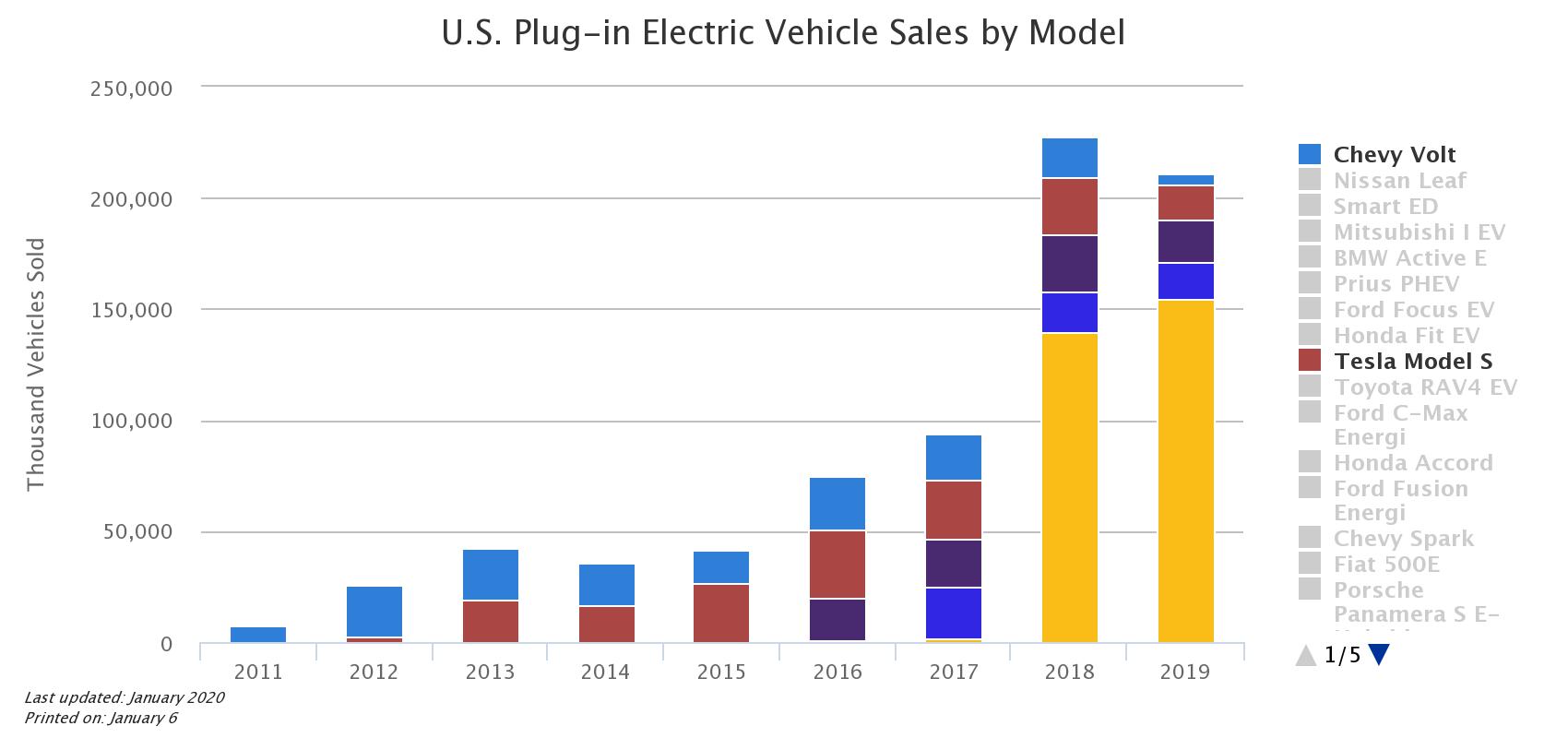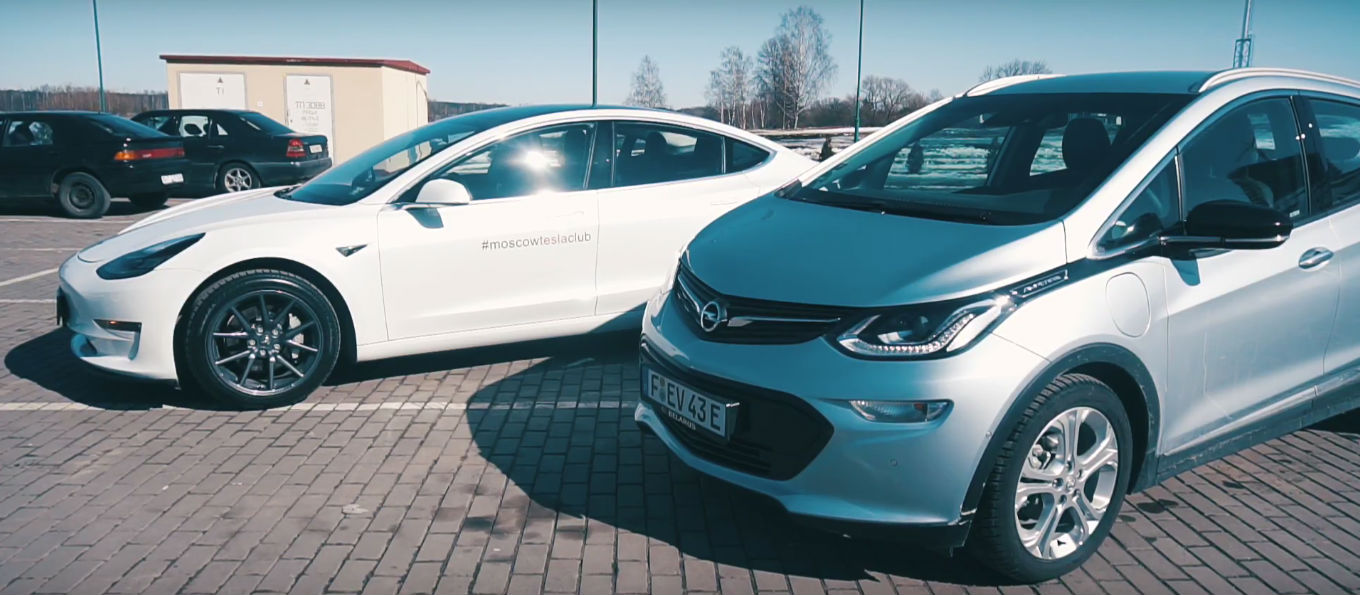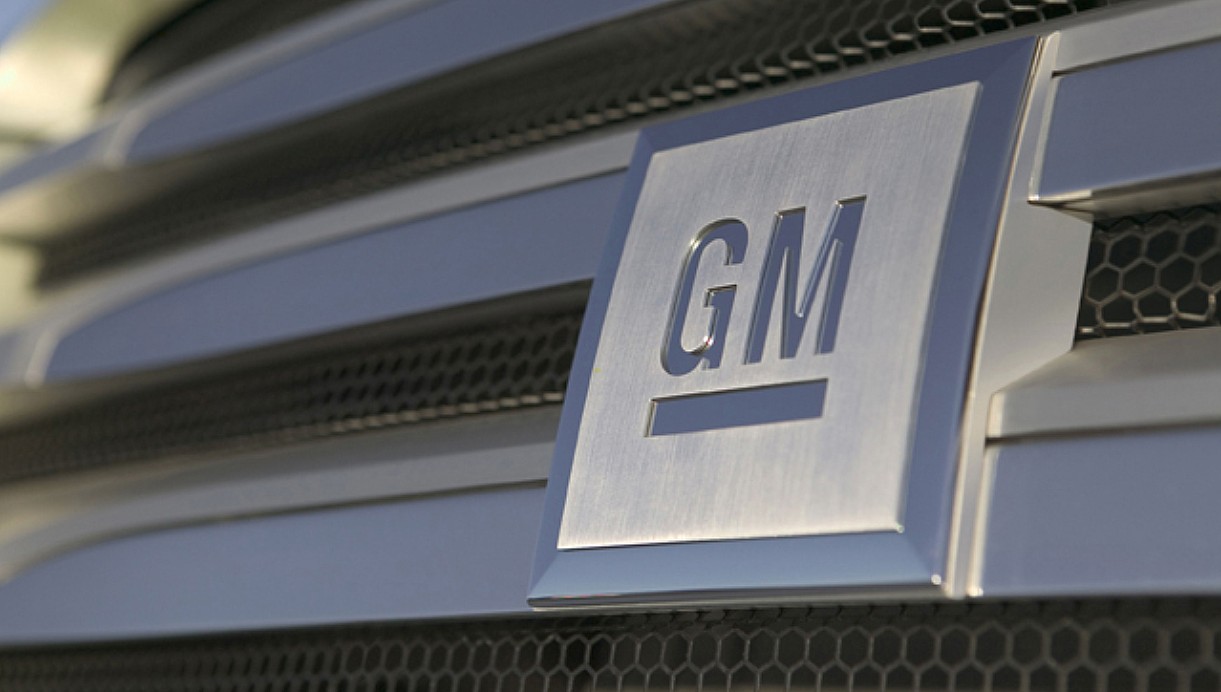General Motors says it has a plan to dethrone Tesla: the undisputed king of electric vehicles.
GM CEO Mary Barra said in November that the company responsible for the Chevy Volt would build a million EVs in 2025. The question is, how will it get there, and what steps will it take to dethrone Tesla, who produced more than 509,000 EVs in 2020 and delivered 98% of them.
“We are committed to fighting for EV market share until we are number one in North America,” Barra said after detailing the plans for 30 EV models by 2025. The project requires a $27 billion investment from one of the U.S’s most notorious automakers. But in the past, car companies have outlined their plans to beat Tesla, and they’ve continuously fallen short, not accounting for Tesla’s planned growth.
In 2012, GM was the undisputed leader in EVs. The Chevy Volt sold 23,461 units that year. Then Tesla came along with the Model S. Five years later, Tesla had figured out that it could build a mass-market vehicle with the Model 3, proving that it’s not about the number of models. Still, the focus should be on affordability and efficiency. Tesla showed that it had figured out the formula for a fun, fast, efficient, and affordable electric car. It was a riddle that legacy automakers that had the cash and infrastructure to develop hadn’t solved.
Credit: U.S. Department of Energy, Alternative Fuel Vehicle Data Key: Blue: Chevy Volt, Burgundy: Tesla Model S, Purple: Tesla Model X, Royal Blue: Chevy Bolt, Yellow: Tesla Model 3
Despite the Model 3 giving Tesla and its frontman Elon Musk significant production issues, the vehicle has become the most popular EV in the U.S., China, and other territories. Led by the Model 3, Tesla held 58 percent of the U.S. EV market share in 2019, and Financial Post states that the automaker could own as much as 80 percent of the market share for 2020.
GM’s plan is simple: depend on its Ultium battery, which will amplify production and the development new, all-electric models. It plans to decrease the cost of battery production to the $100/kWh threshold, which will activate price parity with gas cars, in three years. It then plans to get that down to $75/kWh in 2025. These projections come from Emmanuel Rosner, an analyst with Deutsche Bank.
The problem is: Tesla detailed its complete roadmap to decrease the cost of its price per kWh during the company’s Battery Day event in September 2020, and it shows prices as low as $50/kWh.
This brings in significant possibilities for GM moving forward, especially if it can continue to leverage more affordable battery costs past 2025. However, it will need more help beating Tesla, which at this time, analysts see as the leader for the foreseeable future.
A Tesla Model 3 recently battled a Chevy Bolt on a drag race in Moscow. [Credit: KindelTech/YouTube]
“Price is going to be what determines who is the market leader, and Tesla looks set to win on price for the foreseeable future,” Luke Gear, an analyst at IDTechEX, says.
Past the financials, Tesla’s growth, which is fueled by a strict and non-diversified focus on EVs only, gives the company an explicit advantage moving forward. On the other hand, GM has to combat the development of its 30 planned EVs with its existing fleet of gas-powered vehicles. Tesla can continue developing its EVs without any other distractions. Its name and reputation as the leader in the sector will help attract young and fresh engineering talent, especially in software and manufacturing, which are some of the company’s main focuses.
ALSO READ:
GM watches Tesla go from “graveyard-bound” to inspiration in pursuit of million-mile battery
GM’s goal is considerably lofty, and its words will not win over the Tesla faithful who are critical of the companies who talk a big game but fail to back it up. Many automakers have come along with a plan to disrupt Tesla’s domination in the EV sector, only to figure out that building an effective EV goes past putting a battery pack into a familiar chassis. But even if they don’t become the leader, will it be considered a complete failure?
“If they keep putting out tons of great products…and they take a ton of share from Tesla, are their EV efforts a failure then? I would say no,” David Whiston of Morningstar said.
What do you think? Leave a comment down below. Got a tip? Email us at tips@teslarati.com or reach out to me at joey@teslarati.com.

News
Tesla starts showing how FSD will change lives in Europe
Local officials tested the system on narrow country roads and were impressed by FSD’s smooth, human-like driving, with some calling the service a game-changer for everyday life in areas that are far from urban centers.

Tesla has launched Europe’s first public shuttle service using Full Self-Driving (Supervised) in the rural Eifelkreis Bitburg-Prüm region of Germany, demonstrating how the technology can restore independence and mobility for people who struggle with limited transport options.
Local officials tested the system on narrow country roads and were impressed by FSD’s smooth, human-like driving, with some calling the service a game-changer for everyday life in areas that are far from urban centers.
Officials see real impact on rural residents
Arzfeld Mayor Johannes Kuhl and District Administrator Andreas Kruppert personally tested the Tesla shuttle service. This allowed them to see just how well FSD navigated winding lanes and rural roads confidently. Kruppert said, “Autonomous driving sounds like science fiction to many, but we simply see here that it works totally well in rural regions too.” Kuhl, for his part, also noted that FSD “feels like a very experienced driver.”
The pilot complements the area’s “Citizen Bus” program, which provides on-demand rides for elderly residents who can no longer drive themselves. Tesla Europe shared a video of a demonstration of the service, highlighting how FSD gives people their freedom back, even in places where public transport is not as prevalent.
What the Ministry for Economic Affairs and Transport says
Rhineland-Palatinate’s Minister Daniela Schmitt supported the project, praising the collaboration that made this “first of its kind in Europe” possible. As per the ministry, the rural rollout for the service shows FSD’s potential beyond major cities, and it delivers tangible benefits like grocery runs, doctor visits, and social connections for isolated residents.
“Reliable and flexible mobility is especially vital in rural areas. With the launch of a shuttle service using self-driving vehicles (FSD supervised) by Tesla in the Eifelkreis Bitburg-Prüm, an innovative pilot project is now getting underway that complements local community bus services. It is the first project of its kind in Europe.
“The result is a real gain for rural mobility: greater accessibility, more flexibility and tangible benefits for everyday life. A strong signal for innovation, cooperation and future-oriented mobility beyond urban centers,” the ministry wrote in a LinkedIn post.
News
Tesla China quietly posts Robotaxi-related job listing
Tesla China is currently seeking a Low Voltage Electrical Engineer to work on circuit board design for the company’s autonomous vehicles.

Tesla has posted a new job listing in Shanghai explicitly tied to its Robotaxi program, fueling speculation that the company is preparing to launch its dedicated autonomous ride-hailing service in China.
As noted in the listing, Tesla China is currently seeking a Low Voltage Electrical Engineer to work on circuit board design for the company’s autonomous vehicles.
Robotaxi-specific role
The listing, which was shared on social media platform X by industry watcher @tslaming, suggested that Tesla China is looking to fill the role urgently. The job listing itself specifically mentions that the person hired for the role will be working on the Low Voltage Hardware team, which would design the circuit boards that would serve as the nervous system of the Robotaxi.
Key tasks for the role, as indicated in the job listing, include collaboration with PCB layout, firmware, mechanical, program management, and validation teams, among other responsibilities. The role is based in Shanghai.
China Robotaxi launch
China represents a massive potential market for robotaxis, with its dense urban centers and supportive policies in select cities. Tesla has limited permission to roll out FSD in the country, though despite this, its vehicles have been hailed as among the best in the market when it comes to autonomous features. So far, at least, it appears that China supports Tesla’s FSD and Robotaxi rollout.
This was hinted at in November, when Tesla brought the Cybercab to the 8th China International Import Expo (CIIE) in Shanghai, marking the first time that the autonomous two-seater was brought to the Asia-Pacific region. The vehicle, despite not having a release date in China, received a significant amount of interest among the event’s attendees.
Elon Musk
Elon Musk and Tesla AI Director share insights after empty driver seat Robotaxi rides
The executives’ unoccupied tests hint at the rapid progress of Tesla’s unsupervised Robotaxi efforts.

Tesla CEO Elon Musk and AI Director Ashok Elluswamy celebrated Christmas Eve by sharing personal experiences with Robotaxi vehicles that had no safety monitor or occupant in the driver’s seat. Musk described the system’s “perfect driving” around Austin, while Elluswamy posted video from the back seat, calling it “an amazing experience.”
The executives’ unoccupied tests hint at the rapid progress of Tesla’s unsupervised Robotaxi efforts.
Elon and Ashok’s firsthand Robotaxi insights
Prior to Musk and the Tesla AI Director’s posts, sightings of unmanned Teslas navigating public roads were widely shared on social media. One such vehicle was spotted in Austin, Texas, which Elon Musk acknowleged by stating that “Testing is underway with no occupants in the car.”
Based on his Christmas Eve post, Musk seemed to have tested an unmanned Tesla himself. “A Tesla with no safety monitor in the car and me sitting in the passenger seat took me all around Austin on Sunday with perfect driving,” Musk wrote in his post.
Elluswamy responded with a 2-minute video showing himself in the rear of an unmanned Tesla. The video featured the vehicle’s empty front seats, as well as its smooth handling through real-world traffic. He captioned his video with the words, “It’s an amazing experience!”
Towards Unsupervised operations
During an xAI Hackathon earlier this month, Elon Musk mentioned that Tesla owed be removing Safety Monitors from its Robotaxis in Austin in just three weeks. “Unsupervised is pretty much solved at this point. So there will be Tesla Robotaxis operating in Austin with no one in them. Not even anyone in the passenger seat in about three weeks,” he said. Musk echoed similar estimates at the 2025 Annual Shareholder Meeting and the Q3 2025 earnings call.
Considering the insights that were posted Musk and Elluswamy, it does appear that Tesla is working hard towards operating its Robotaxis with no safety monitors. This is quite impressive considering that the service was launched just earlier this year.










